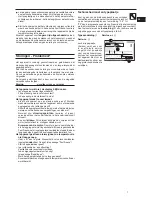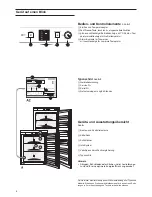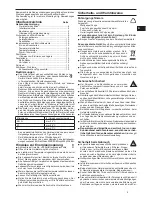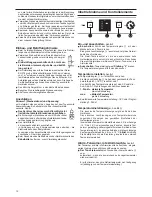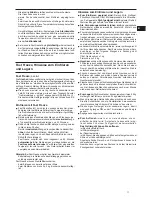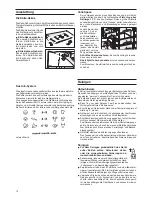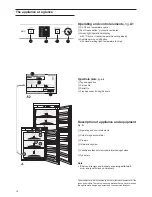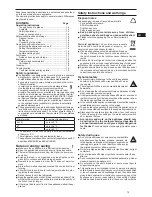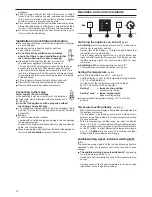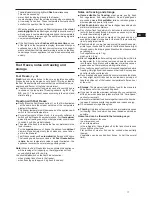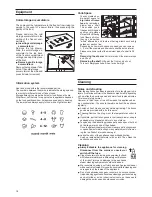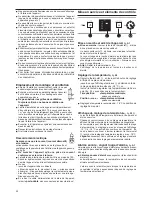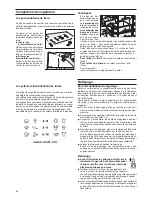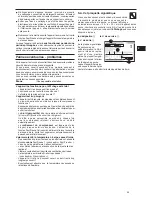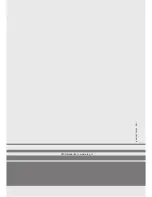
18
Cold-storage accumulators
These prevent the temperature in the freezer from rising too
quickly in the event of a power failure, thus preserving the
quality of the food.
Freeze and store the cold
storage accumulators in the
ceiling of the freezer com-
partment
W
Inserting cold-storage
accumulators:
Remove the top drawer.
Slide the cold-storage ac-
cumulator to the top back
of the freezer compartment
ceiling and snap it into place
at the front.
W
Removing cold-storage
accumulators:
Remove the top drawer. Take
hold of the cold-storage
accumulator at the side and
press it down for removal.
Information system
Use frozen food within the recommended period.
The numbers between the symbols indicate the storage period
in months for different kinds of frozen foods.
Storage times given are guide times for food frozen at home.
Whether or not the lower or upper value is applicable depends
on the food quality and how it was processed prior to freezing.
The lower values always apply to food with a high fat content.
VarioSpace
- You can create a dou-
ble-height space for
big items of frozen
food by removing a
drawer and a shelf.
This enables you to
freeze such things as
poultry or big pieces
of meat without having
to cut them up first, so
they can be served
"whole" afterwards, and to store other large items such as big
gateaux or packs of ice.
- Depending on how much space you need, you can remove
1, 2, or all the drawers and shelves to use the entire interior.
Please note however that the maximum load of a shelf is 35
kg.
-
Removing the drawer:
Pull forward until the drawer stops
and lift out.
-
Removing the shelf
: Lift up at the front and pull out.
- To insert: simply push shelf in as far as it will go.
Cleaning
Notes on defrosting
After the appliance has been in operation for a lengthy period, a
layer of frost or ice will form in the freezer compartment, depending
on how often the door is opened and warm food is placed inside.
This is completely normal.
However, a thick layer of ice will increase the appliance‘s en-
ergy consumption. You should therefore defrost the appliance
regularly:
W
Switch on Fast Freeze one day before defrosting. The frozen
goods are provided with a "cold reserve".
W
Thawing:Remove the plug or set the temperature control to
"0".
W
If possible, put the frozen goods in the freezer drawer, wrap in
newspaper or a blanket and store in a cool place.
W
To speed up the defrosting process put a saucepan of hot but
not boiling water on one of the shelves.
Do not use electric heaters or steam cleaners, defrosting sprays
or naked flames for defrosting nor any metal objects for remov
-
ing the ice. Risk of injury and damage!
W
Leave the door of the appliance open while defrosting.
Soak up residual defrost water with a cloth. Then clean the
appliance and wipe dry
Cleaning
W
Always disable the appliance for cleaning.
Disconnect from the mains or unscrew or
switch off the fuse.
W
Clean the outer walls, inside and equipment by hand
with lukewarm water and a little detergent. Because
of the risk of injury and damage to the appliance,
steam cleaning equipment should not be used.
W
We recommend using a soft cloth and an all-purpose cleaner
with a neutral pH value. Only use food compatible cleaning and
care agents on the inside of the appliance.
W
Do not use abrasive sponges or scourers, do not use concen-
trated cleaning agents and never use cleaning agents containing
sand, chloride or acid or chemical solvents, as these would
damage the surfaces and could cause corrosion.
Equipment




